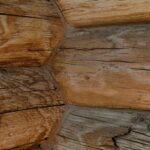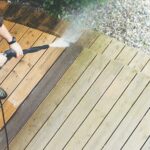
Soda Blasting VS Sand Blasting Compared
Define Sand Blasting
Sandblasting is an informal name used to describe abrasive blasting. When an abrasive substance like sand is used under high pressure against an object, that process is known as abrasive blasting.
Abrasive blasting is used for many purposes, including removing paint from metal and machinery. Sandblasting doesn’t necessarily use only sand. You can also perform other kinds of abrasive blasting like glass bead blasting, soda blasting, walnut shell blasting, and coconut shell blasting.
Pros and Cons of Sand Blasting
Sand blasting is generally preferred for industrial applications and is known to be more effective than processes like soda blasting when it comes to removing dust. It is does a quicker cleaning than soda blasting. Heavy industrial jobs need the power of the sand blasting to get the job done effectively.
Sand blasting service providers are considered fast, cost effective and efficient. Abrasive blasting can be done using many materials including sand, most of which can be cheaply obtained in bulk. Although sand blasting could take more time to perform when compared to soda blasting, it at least cuts back on the cost.
The industry doesn’t recommend using sand blasting on softer material like plastic, wood, and glass. The process is too harsh and can use material damage to these mediums. Through friction, this procedure does release a lot of heat and could cause some damage to the material it’s applied on. Sand blasting does not sanitize, or remove odors like sofa blasting would. It is also unsafe to inhale the particles released during sand blasting as it could cause silicosis.
Abrasive blasting techniques like sand blasting can sometimes impact the environment negatively. The level of impact depends highly on the type of medium used. Using biodegradable material like walnut shells and coconut would be better on the environment than non-biodegradable material. Other material can clog the soils or leave residues that can affect the atmosphere. One must be sure to use the medium that doesn’t harm or clog the local water supply, and that it is free from heavy metals.
Using a booth helps solve the environmental issues that abrasive blasting could cause. The curtains on these booths would trap the dry material used in the blasting sessions. This means it can be reused and disposed carefully. This helps reduce the impact the material have on the environment as it is handled under the controlled environment of the booth.
Define Soda Blasting
Soda blasting is a technology that has been newly introduced to the world of abrasive blasting. Even if it technically uses an abrasive many professionals in the industry consider this type of blasting as non-abrasive. Soda blasting service professionals uses sodium bicarbonate that is specifically granulated to smoothen out the surfaces and take off any contaminants.
Soda blasting is much gentler than media blasting and sand blasting because the sodium bicarbonate tends to shatter immediately on impact. If applied correctly, you can use this technique on plastic, chrome, and even glass. Since sodium bicarbonate works as a natural deodorant, soda can be used to remove mold and smoke damages.
Pros and Cons of Soda Blasting
Soda blasting is biodegradable, and makes for an environmentally friendlier choice. It is also soluble in water and non-toxic. This means it won’t build up in the soil or residential areas. It is a lot gentler than sand blasting and doesn’t produce too much extra heat. This means it won’t damage metal surfaces.
Soda blasting can also remove grease and paint fifteen times faster than hydro-blasting. It also prevents future rusting. Even if you can technically safely inhale sodium bicarbonate or baking soda, it is still advised to use a gas mask while performing soda blasting. Nonetheless, soda blasting is certainly much safer than sand blasting. Inhaling some baking soda does not prove to be harmful to your health.
Unfortunately, the chemicals, machinery, and labor that come with soda blasting can be more expensive than sandblasting. Since sodium bicarbonate does not have a strong chemical structure, it shatters into powder at the end of the blasting process. This means it can only be used once and that makes the cost of soda blasting stay a little higher than processes like sand blasting. You can only use the amount of sodium bicarbonate once, and that means each procedure needs its own set of chemicals.
However, this is a slight set back that is compensated by soda blasting being the environmentally better choice as well as a time saving choice as well. It takes less time and effort to set up for soda blasting. And since time is money – this actually makes up for the slightly higher costs it incurs. Therefore, what it lacks in cost efficiency, soda blasting makes up for in time effectiveness, and environmental effects.
Which One is Better?
From the comparison we have done so far, it is quite clear that soda blasting is the more flexible option when compared to sand blasting. However, deciding which type of blasting is better clearly depends on the intent of the blasting and the materials involved. The type of job, the kind of materials used, are some of the factors that need to be considered when deciding between using soda blasting and sand blasting. Soda blasting works better for softer material and sand blasting is better at industrial level tasks.
For instance, soda blasting is preferred when it comes to cleaning aluminum sheet metal, but sand blasting is the right choice to clean industrial equipment. Cars usually use sand blasting as it is cheaper. However, the blaster should be really careful in order to avoid damage to the car body and windows.
Therefore, an analysis on the harshness required for the blasting, and the medium involved has to be taken into account when deciding which procedure is most appropriate. Both process has its pros and cons and it should be weighed to decide on the right process.









No Comments
Sorry, the comment form is closed at this time.